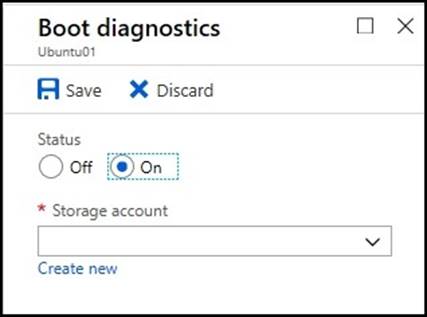- (Topic 4)
Your company creates a web application.
You need to recommend a solution that automatically sends to Microsoft Teams a daily summary of the exceptions that occur in the application.
Which two Azure services should you recommend? Each correct answer presents part of the solution.
NOTE: Each correct selection is worth one point.
Correct Answer:
AE
E: Exceptions in your live web app are reported by Application Insights.
Note: Periodical reports help keep a team informed on how their business critical services are doing. Developers, DevOps/SRE teams, and their managers can be productive with automated reports reliably
delivering insights without requiring everyone to sign in the portal. Such reports can also help identify gradual increases in latencies, load or failure rates that may not trigger any alert rules.
A: You can programmatically query Application Insights data to generate custom reports on a schedule. The following options can help you get started quickly:
Automate reports with Microsoft Flow
Automate reports with Logic Apps Reference:
https://docs.microsoft.com/en-us/azure/azure-monitor/app/asp-net-exceptions https://docs.microsoft.com/en-us/azure/azure-monitor/app/automate-custom-reports
- (Topic 4)
You plan to provision a self-hosted Linux agent
Which authentication mechanism should you use to register the self-hosted agent?
Correct Answer:
B
Note: PAT Supported only on Azure Pipelines and TFS 2017 and newer. After you choose PAT, paste the PAT token you created into the command prompt window. Use a personal access token (PAT) if your Azure DevOps Server or TFS instance and the agent machine are not in a trusted domain. PAT authentication is handled by your Azure DevOps Server or TFS instance instead of the domain controller.
Reference:
https://docs.microsoft.com/en-us/azure/devops/pipelines/agents/v2-linux
https://docs.microsoft.com/en-us/azure/devops/pipelines/agents/v2-linux?view=azure- devops
SIMULATION - (Topic 4)
SIMULATION
You need to create and configure an Azure Storage account named az400lod11566895stor in a resource group named RG1lod11566895 to store the boot diagnostics for a virtual
machine named VM1.
To complete this task, sign in to the Microsoft Azure portal.
Solution:
Step 1: To create a general-purpose v2 storage account in the Azure portal, follow these steps:
On the Azure portal menu, select All services. In the list of resources, type Storage Accounts. As you begin typing, the list filters based on your input. Select Storage Accounts. On the Storage Accounts window that appears, choose Add.
Select the subscription in which to create the storage account. Under the Resource group field, select RG1lod11566895
Next, enter a name for your storage account named: az400lod11566895stor Select Create.
Step 2: Enable boot diagnostics on existing virtual machine
To enable Boot diagnostics on an existing virtual machine, follow these steps: Sign in to the Azure portal, and then select the virtual machine VM1.
In the Support + troubleshooting section, select Boot diagnostics, then select the Settings tab.
In Boot diagnostics settings, change the status to On, and from the Storage account drop- down list, select the storage account az400lod11566895stor.
Save the change.
You must restart the virtual machine for the change to take effect.
Does this meet the goal?
Correct Answer:
A
- (Exam Topic 4)
You plan to share packages that you wrote, tested, validated, and deployed by using Azure Artifacts.
You need to release multiple builds of each package by using a single feed. The solution must limit the release of packages that are in development.
What should you use?
Correct Answer:
D
Views enable you to share subsets of the NuGet, npm, Maven, Python and Universal Packages package-versions in your feed with consumers. A common use for views is to share package versions
that have been tested, validated, or deployed but hold back packages still under development and packages that didn’t meet a quality bar.
https://docs.microsoft.com/en-us/azure/devops/artifacts/concepts/views?view=azure-devops
- (Exam Topic 4)
You manage an Azure web app that supports an e-commerce website.
You need to increase the logging level when the web app exceeds normal usage patterns. The solution must minimize administrative overhead.
Which two resources should you include in the solution? Each correct answer presents part of the solution. NOTE: Each correct selection is worth one point.
Correct Answer:
AB
A: You can use Azure Monitor to monitor base-level metrics and logs for most services in Azure. You can call Azure Automation runbooks by using action groups or by using classic alerts to automate tasks
based on alerts.
B: Metric Alert with Dynamic Thresholds detection leverages advanced machine learning (ML) to learn metrics' historical behavior, identify patterns and anomalies that indicate possible service issues. It
provides support of both a simple UI and operations at scale by allowing users to configure alert rules through the Azure Resource Manager API, in a fully automated manner.
Reference:
https://docs.microsoft.com/en-us/azure/azure-monitor/platform/alerts-dynamic-thresholds https://docs.microsoft.com/en-us/azure/automation/automation-create-alert-triggered-runbook

